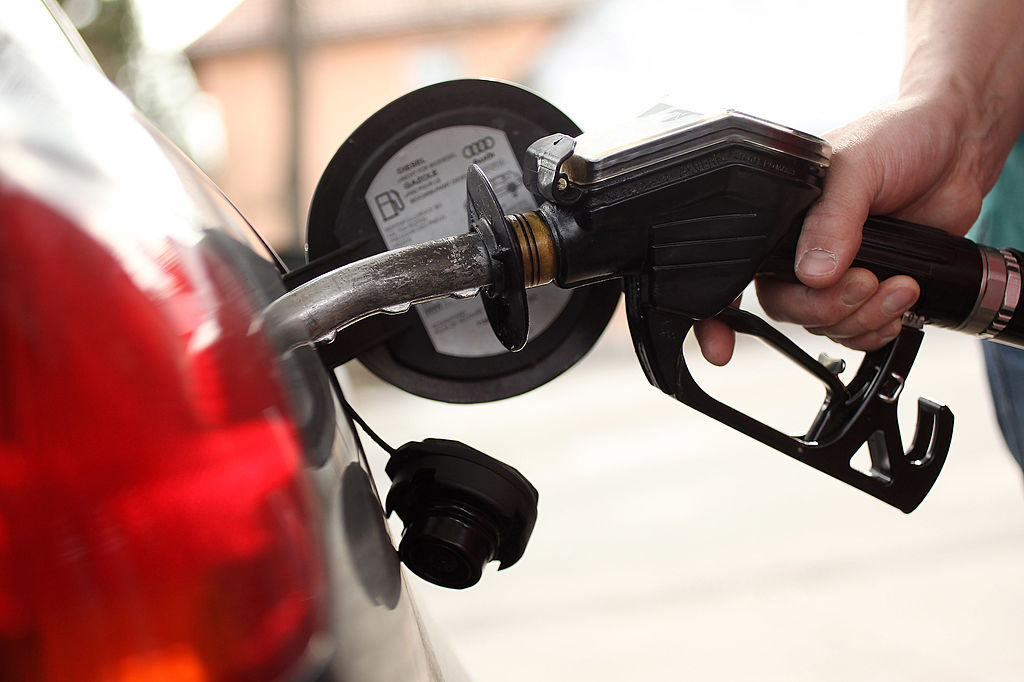Americans have enjoyed cheap gas for years. That will change this summer.


Rising oil prices will translate into higher U.S. gas prices this summer driving season, private analysts and the U.S. Energy Information Administration (EIA) project. Average gas prices are currently $2.81 per gallon, up from $2.39 a year ago, with people on the West Coast paying more and those on the East Coast a little less, according to the Oil Price Information Service. "This will be the most expensive driving season since 2014," Tom Kloza, the service's global head of energy analysis, tells The Associated Press. Gas prices typically rise every April through Memorial Day, as Americans hit the road, then slowly ease downward through September; April already marked a record high for U.S. consumer gas demand, the EIA says.
The EIA estimates that regular gas prices will average $2.74 a gallon this summer, up from $2.41 last summer, and an average of $2.76 a gallon for all of 2018, which translates to an extra $190 for the average U.S. household. But in 2008, when crude oil prices shot up above $130 a barrel, gas hit $4.11 per gallon, and just five years ago, drivers were paying an average of $3.60 at the pump. Crude prices are currently about $68 a barrel. "People forget very, very quickly," Kloza said.
Oil prices are up because of increasing global demand tied to economic expansion plus production cuts from OPEC nations. "The good news is, both at the global level and the U.S. level, this is occurring at a time when growth is fairly robust," Nariman Behravesh, chief economist at IHS Markit, tells AP. "But consumers as whole will be hurt, mostly because gasoline prices are going up."
The Week
Escape your echo chamber. Get the facts behind the news, plus analysis from multiple perspectives.

Sign up for The Week's Free Newsletters
From our morning news briefing to a weekly Good News Newsletter, get the best of The Week delivered directly to your inbox.
From our morning news briefing to a weekly Good News Newsletter, get the best of The Week delivered directly to your inbox.
A free daily email with the biggest news stories of the day – and the best features from TheWeek.com
Peter has worked as a news and culture writer and editor at The Week since the site's launch in 2008. He covers politics, world affairs, religion and cultural currents. His journalism career began as a copy editor at a financial newswire and has included editorial positions at The New York Times Magazine, Facts on File, and Oregon State University.
-
 Best poetry books of 2025
Best poetry books of 2025The Week Recommends Magnificent collections from Luke Kennard, Leo Boix and Isabelle Baafi
-
 11 extra-special holiday gifts for everyone on your list
11 extra-special holiday gifts for everyone on your listThe Week Recommends Jingle their bells with the right present
-
 ‘Furious Minds: The Making of the MAGA New Right’ by Laura K. Field and ‘The Dream Factory: London’s First Playhouse and the Making of William Shakespeare’ by Daniel Swift
‘Furious Minds: The Making of the MAGA New Right’ by Laura K. Field and ‘The Dream Factory: London’s First Playhouse and the Making of William Shakespeare’ by Daniel SwiftFeature An insider’s POV on the GOP and the untold story of Shakespeare’s first theater
-
 US mints final penny after 232-year run
US mints final penny after 232-year runSpeed Read Production of the one-cent coin has ended
-
 Warner Bros. explores sale amid Paramount bids
Warner Bros. explores sale amid Paramount bidsSpeed Read The media giant, home to HBO and DC Studios, has received interest from multiple buying parties
-
 Gold tops $4K per ounce, signaling financial unease
Gold tops $4K per ounce, signaling financial uneaseSpeed Read Investors are worried about President Donald Trump’s trade war
-
 Electronic Arts to go private in record $55B deal
Electronic Arts to go private in record $55B dealspeed read The video game giant is behind ‘The Sims’ and ‘Madden NFL’
-
 New York court tosses Trump's $500M fraud fine
New York court tosses Trump's $500M fraud fineSpeed Read A divided appeals court threw out a hefty penalty against President Trump for fraudulently inflating his wealth
-
 Trump said to seek government stake in Intel
Trump said to seek government stake in IntelSpeed Read The president and Intel CEO Lip-Bu Tan reportedly discussed the proposal at a recent meeting
-
 US to take 15% cut of AI chip sales to China
US to take 15% cut of AI chip sales to ChinaSpeed Read Nvidia and AMD will pay the Trump administration 15% of their revenue from selling artificial intelligence chips to China
-
 NFL gets ESPN stake in deal with Disney
NFL gets ESPN stake in deal with DisneySpeed Read The deal gives the NFL a 10% stake in Disney's ESPN sports empire and gives ESPN ownership of NFL Network
